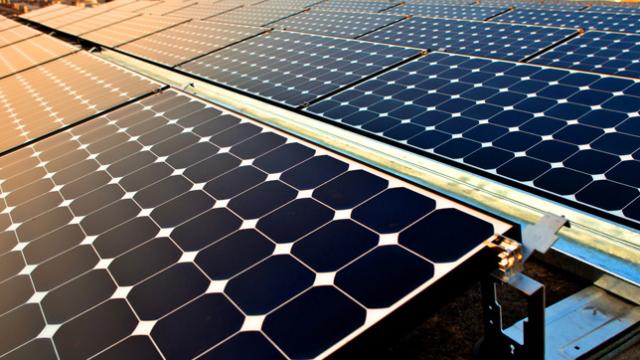Solar power is one of the most reliable forms of renewable power — but it’s still expensive. Now, a team has developed a smart, adaptive material that could slash the its cost in half.
Developed by startup Glint Photonics, the new material has optical properties that can change to help it capture as much light as possible. Currently, large-scale solar plants have to use tracking technology to ensure that their cells maximise their exposure to sunlight; this new material changes its reflectivity in response to heat from concentrated light to capture light across a wide range of angles.
The new technology is a kind of coating for use in a solar cell which focuses light into a piece of glass. An array of thin lenses concentrate sunlight across a broad range of angles, before it’s passed to a glass sheet, coated on both sides with reflective coating. The front coating, however, is made of the new material, and Technology Review explains how it works:
When a beam of concentrated light from the array of lenses hits the material, it heats up part of it, causing that part to stop being reflective, which in turn allows light to enter the glass sheet. The material remains reflective everywhere else, helping to trap that light inside the glass — and the light bounces around until it reaches the thin edge of the glass, where a small solar cell is mounted to generate electricity.
As the day wears on, the lenses throw the light — captured across a broad range of incident angles, remember — onto a different spot on the glass sheet, always allowing light in only where the beam of light falls. In turn, it reduces the need to keep the device pointed directly at the sun. Glint Photonics claims that the technology could produce solar power at a cost of four cents per kilowatt-hour, compared to eight cents per kilowatt-hour for normal solar panels.
The technology is still a proof of concept — its efficines still need to be upped, and the whole thing need to be scaled to work at commercial volumes — but it’s a very promising development. [Technology Review]
Picture: Intel Free Press
